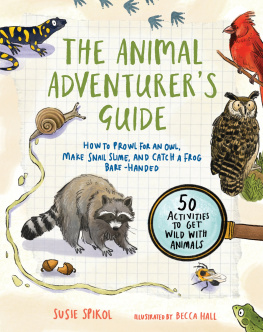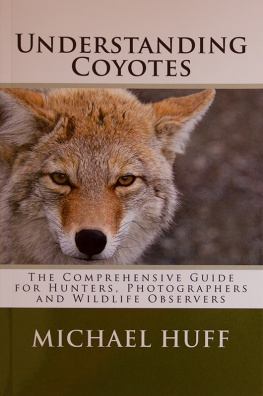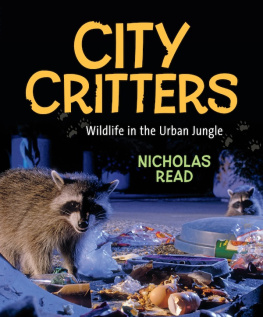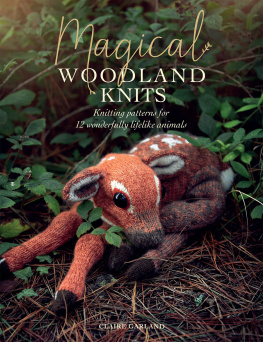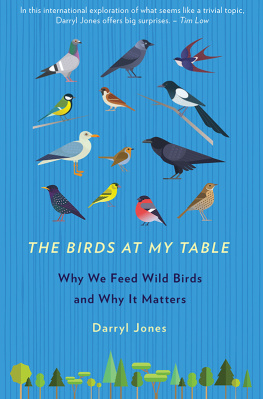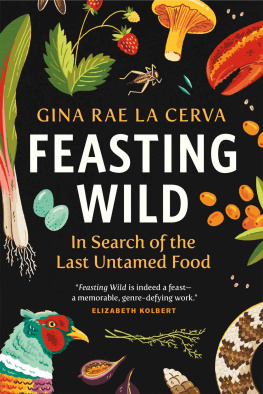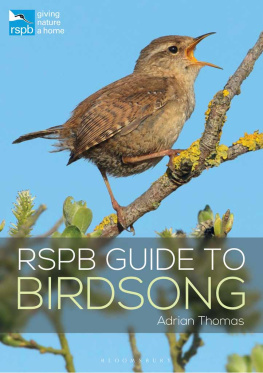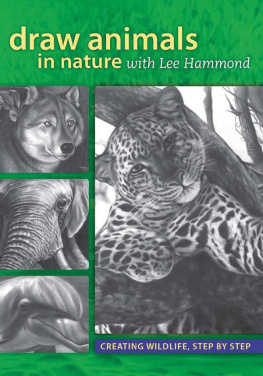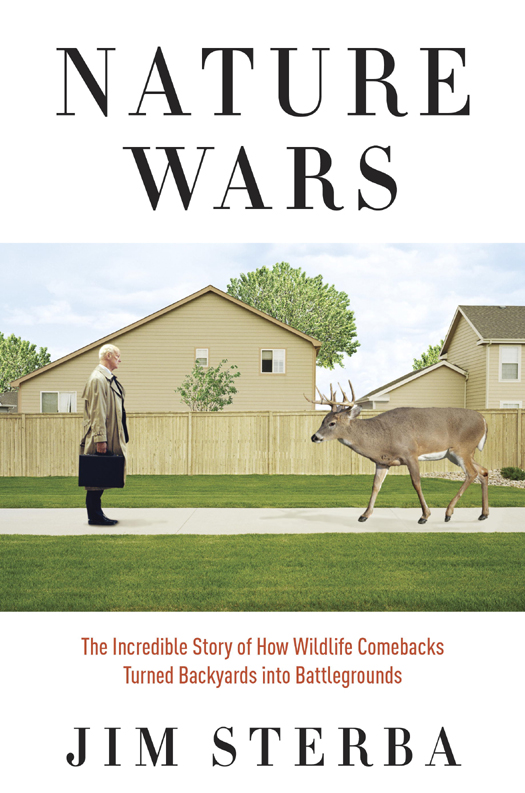More praise for
NATURE WARS
If there is one lesson to be learned from Jim Sterbas book, it is: Be careful what you wish for. Having decimated our planets natural state, we are blithely overcompensating, overcorrecting, and overturning the balance of nature yet again. Nature, as seen by most of us through a double-glazed picture window revealing a manicured lawn but whats that moose being chased by a coyote being chased by a black bear doing there? Read Nature Wars and weep. Or at least, stop and think.
M ORLEY S AFER
In this elegant and compelling tour of Americas mutating connections with its land and wildlife, Jim Sterba uses wit and insight to reveal new and unintended consequences of human sprawl and the ways in which they have shaped todays relationships with Nature.
J OHN H. A DAMS , founding director of the Natural Resources Defense Council
Jim Sterba has done a brilliant job explaining how it happens that drivers more often than ever run into deer, wild turkeys gorge on newly planted seed corn, and why golf courses are filled with people chasing geese down the fairways with five irons in hand. This informative and beautifully written book gives us the effect of civilization (often well-meaning) on the natural habitat, both flora and fauna.
P ETER D UCHIN , musician and author of Ghost of a Chance
Anything Jim Sterba writes is worth readingand his latest, Nature Wars, is terrific. Sterba casts a reporters sharp eye on a little noticed war unfolding under our noses, in our own backyards.
J OSEPH L. G ALLOWAY , coauthor of We Were Soldiers Once and Young and We Are Soldiers Still
Most Americans now live not in cities but in regrown forests, among at least as many deer as when Columbus landed. Jim Sterba tells us how this came to be and why it isnt all good. In graceful, clear-eyed prose, he explains why we need to relearn how to cut, cull, and kill, to restore a more healthy balance to our environment.
P AUL S TEIGER , editor in chief of ProPublica
At last someones grappling with the elephant in the roomor rather the deer, the coyote, the beaver, the bear Sterbas book may strike some as observational comedy but hes deadly serious. Every word rings true. Nature is vengeful. All I can say is, he better not take a walk in his backyard without a shotgun.
J OHN D ARNTON , Pulitzer Prizewinning journalist and author of Almost a Family
In this book, Jim Sterba has given us a fascinating, powerful, and important lesson in why we should be careful when we mess with Mother Nature.
W INSTON G ROOM , author of Forrest Gump
Although few of us realize it, America is at a turning point where we must rethink our most fundamental ideas about nature, animals, and how we live. Fortunately we have a wise and witty guide in Jim Sterba, whose Nature Wars is my favorite kind of reada book that affectionately recasts much of what we thought we knew about our nations past and our relationship to the American wild, while at the same time revealing how intimately we ourselves are a part of nature, but in the most surprising and unexpected ways.
T REVOR C ORSON , author of The Secret Life of Lobsters and The Story of Sushi
ALSO BY JIM STERBA
Frankies Place: A Love Story
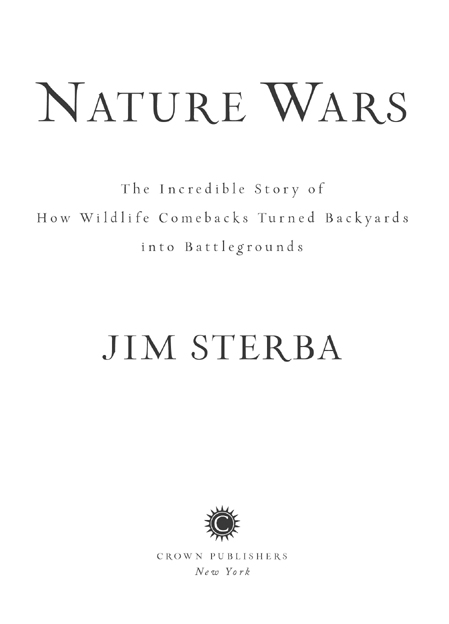
 | Random House Speakers Bureau
THE WORLDS BEST SPEAKERS UNDER ONE ROOF |
This author is available for select readings and lectures. To inquire about a possible appearance, please contact the Random House Speakers Bureau at rhspeakers@randomhouse.com or (212) 572-2013.
http://www.rhspeakers.com/
Copyright 2012 by Jim Sterba
All rights reserved.
Published in the United States by Crown Publishers, an imprint of the Crown Publishing Group, a division of Random House, Inc., New York.
www.crownpublishing.com
CROWN and the Crown colophon are registered trademarks of Random House, Inc.
Portions of this book appeared in different form in the Wall Street Journal and are used here with permission.
Excerpts from Reel Nature by Gregg Mitman are used with permission of the author, who holds the copyright.
Library of Congress Cataloging-in-Publication Data
Sterba, Jim, 1943
Nature wars : the incredible story of how wildlife comebacks turned backyards into battlegrounds / Jim Sterba.1st ed.
p. cm.
Includes bibliographical references.
1. NatureEffect of human beings onUnited States. 2. Nature conservationSocial aspectsUnited States. 3. Wildlife conservationSocial aspectsUnited States. 4. Wildlife rehabilitationSocial aspectsUnited States. 5. United StatesEnvironmental conditions. I. Title.
GF503.S74 2011
304.20973dc23
2012000296
eISBN: 978-0-307-98566-8
Jacket design: Megan McLaughlin
Jacket photographs: istockphoto/Paul Tessier (deer), JFB/Getty Images (businessmen), Sascha Pflaeging/Getty Images (background)
v3.1_r1
For Frances
CONTENTS
INTRODUCTION
Wild turkeys roost in pines on the hill beside the house. Blue herons stalk the pond, stabbing at frogs and bass. Painted turtles sun themselves on floating barley bales. Ducks and geese fly in and out. Red-tailed hawks soar above. Crows are constant visitors. Vultures circle. Songbirds abound. Raccoons, red foxes, and opossums stop by. Spring skunks make their presence known. Plenty of woodchucks, rabbits, gray squirrels, and chipmunks share our little plot. Great horned owls keep us awake. Woodpeckers pound holes in the house siding. Beavers, muskrats, and bog turtles ply the marsh out back, and coyotes howl at dusk behind it. Weve seen river otters, a fisher, and a long-tailed weasel. Bobcat sightings are credible, feral pigs are headed our way, a moose ambled to within a couple of miles as the crow flies. Last spring, a bear devoured our neighbors birdseed, and a mountain lion turned up one state over.
My wife and I live, on weekends, in the northeast corner of Dutchess County, New York, on the edge of the countrys largest metropolitan region. We rent a guest cottage on the remains of a 180-acre dairy farm that is a patchwork of meadows, marsh, and forest. That we share it with such a wild menagerie, just two hours north of New York City, is a source of some amazement, especially to people who live elsewhere.
Deer are everywhere. They have eaten out much of what grows on the forest floor. They graze in the field behind the house, sometimes in daylight. They snack in our yard and have salted it with ticks (Ive had Lyme disease three times in eleven years). Turkeys are becoming less wild around us. They flock in the daytime beside busy roads, sometimes roaming in gangs through newly sown fields, pecking seed grain from the soil and causing farmers fits. Canada geese more than a thousand strong live more or less permanently within a radius of three miles from us, eating and defecating, eating and defecating. Their droppings are fouling local lakes and ponds, turning golf courses into obstacle courses, and rendering parks and athletic fields at times unusable.




